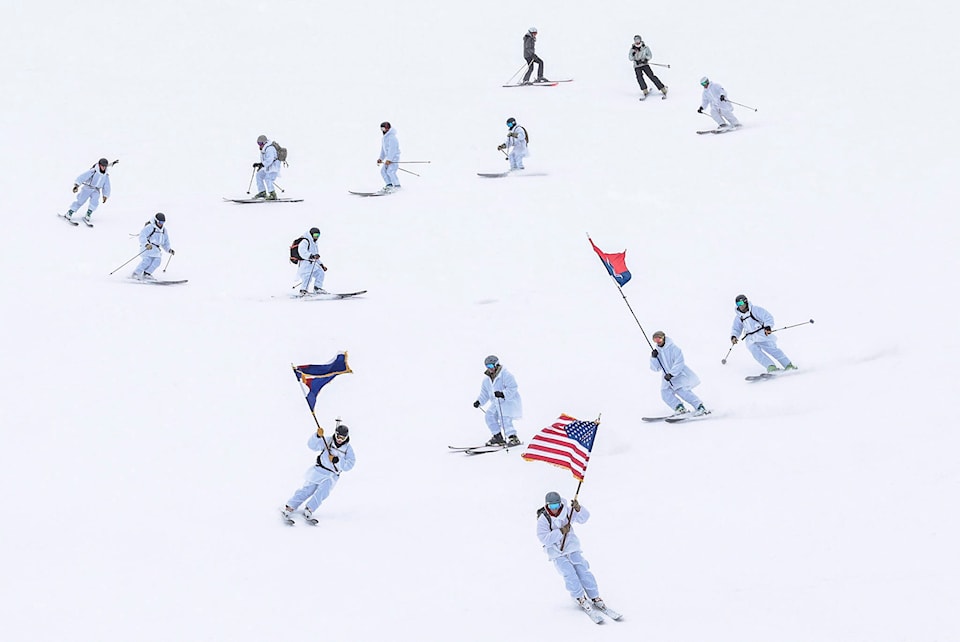By Seth Boster The Gazette (Colorado Springs, Colo.)
While efforts are afoot in Cuchara to revive the little Colorado town’s ski area, warming huts and chairlifts elsewhere in the state seem abandoned for good. Here’s a look at some of the industry’s skeletons:
———
—Pikes Peak (1939-84): Often lost in the colorful history of America’s Mountain is the story of organized skiing. “Pikes Peak or Bust,” reported the New York Herald Tribune in 1941, was “the happy call of ski enthusiasts all over America.”
By then, a rope tow had been built at Glen Cove. In 1939, The Gazette-Telegraph reported 18,700 visitors had flocked to ski the mountain. Stories were later told of big crowds at competitive races.
The focus eventually turned to Elk Cove, where a state-of-the-art Poma lift was built for naught. Old pictures showing exposed dirt and rock might tell the tale from there.
—Ski Broadmoor (1959-91): For locals, The Broadmoor’s two humble runs served as quick fixes: a minor 600-foot descent, enough for wind in the face. But not enough for financial sustainability, apparently.
The hotel sold the hill to the city in 1986. Two years later the city sold to Vail Resorts, which soon walked away without the returns desired.
—Berthoud Pass (1937-2001): If you’re driving the pass and happen upon a thumbs-out hitchhiker, you’re witnessing a long-standing tradition. Back in the ski area’s day, visitors usually planned to have one vehicle up top near 12,000 feet and one at the base.
Skiing is indeed still popular on “the pass,” as it was simply known in the commercial heyday. The operation was destined for financial failure —but not before setting standards in Colorado’s scene.
The rope tow that started running in 1937 is argued as the state’s earliest, along with Glen Cove’s. It’s believed that Berthoud opened the first double chair. It’s also said these slopes are where skiers and snowboarders learned to share space.
—Conquistador Ski Resort (1978-88, 1992): The lack of snow on the southern Sangre de Cristo Mountains was to blame for the resort’s downfall. Or maybe it was Westcliffe locals’ angst toward development. Likely, it was a combination of factors.
There was a last hurrah in 1992, bankrolled by a pair of out-of-staters. They bailed after the dry, windy season.
—Geneva Basin Ski Area (1963-84): Just as many Coloradans remember falling in love with the sport on Berthoud Pass, many others remember doing so here above Georgetown. And just as backcountry travel resumes at the pass, so powder hounds continue to frequent Geneva Basin.
One might find the old cabin that in recent years has still displayed the former ski area map. “Knicker knocker” went the name of a challenging run. “Jolly Time” went the name of another.
Behind the scenes, times were hardly ever jolly. The ski area swapped hands often, from an Illinois family, to former Gov. Roy Romer, to a Kansas investment group. One day an empty chair fell, forcing the state to shut down the ski area, never to return again.
—Hidden Valley/Ski Estes Park (1955-91): In the heart of Rocky Mountain National Park, the terrain was deemed ideal for skiing: a valley floor gradually rising to Trail Ridge Road. At the time, the National Park Service wasn’t totally opposed to development. That view of course changed, and so crashed dreams of a ski area.
The lifts, including two T-bars, are gone. But the terrain is still there: some 1,200 acres catering to all skill levels. Experts willing to hoof it salivate over the 2,000-foot vertical drop.
———
Source: ColoradoSkiHistory.com
